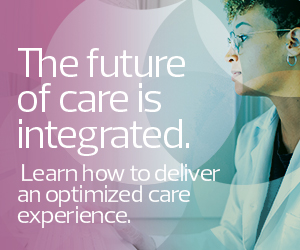Creating a Clinical Setup for Telehealth Success
Kvedar, a practicing dermatologist at Mass General Brigham, sets aside dedicated time each week for telehealth appointments. He can see up to 10 patients over the course of two and a half hours, primarily for follow-up visits.
During this dedicated time, Kvedar settles into his office, where he has one monitor for launching video visits and a second for documenting in Epic, the system’s electronic health record. Zoom is integrated with Epic for providers as well as patients, who can request an appointment and launch it through MyChart.
EHR integration is a key reason this setup succeeds, as providers don’t need to juggle multiple applications, Kvedar says. Appointments start on time and progress quickly in part because providers have patients’ records in front of them.
Blocking off time on the calendar improves the experience as well, Kvedar says, as it means providers are in a single mindset for a given time frame. “If you try to integrate telehealth into other workflows, if you try to go between the exam room for in-person visits and the office to do virtual visits, that can put added stress on you as a clinician,” he says.
READ MORE: Realize the power of virtual care.
Using Telehealth at the Right Time — and Getting Paid at the Right Rates
In some cases, telehealth technology can work against providers. Stand-alone solutions come with additional workflows to learn, and documentation may not easily flow back to EHR, practice management or revenue cycle management systems. Community health centers and the patients they serve may face obstacles in adopting state-of-the-art technology too, though replacing aging hardware and migrating to the cloud (perhaps with the help of grant funding) can help to bridge the gap.
Still, the broader impact of a negative clinical experience with telehealth tends to be on the policy or operational side.
One example is state licensure requirements that restrict who can use telehealth. Kvedar sees many patients in neighboring New Hampshire, but because they’re across state lines, he’s not licensed to see them virtually. “They have to sit in a parking lot across the border to take a call.” (Massachusetts doesn’t currently participate in any interstate medical licensure compacts, according to the Center for Connected Health Policy.)
In addition, not all private insurers have followed Medicare’s lead in reimbursing telehealth at parity for E/M coding. For many, this erodes telehealth’s value proposition. McKinsey’s survey notes that more than half of physicians would be less likely to offer telehealth if reimbursement rates were 15 percent lower than rates for in-person visits.
One undercurrent in the reimbursement conversation is that telehealth may lead to increased utilization of healthcare services, Kvedar says. A recent Epic Research study found that telehealth visits have higher rates of follow-up appointments compared with in-person visits,
One way to address the overall utilization concern, Kvedar says, is by helping patients and administrative staff alike better understand when telehealth is most appropriate. For example, some prescription refills can be done virtually, but others require a physical examination. In dermatology, a workflow that supports patients in submitting photos before booking can help determine whether a visit requires a biopsy or a simple treatment recommendation.
“You need a triage function. It’s incumbent on the provider side to be thoughtful about the diagnostic or therapeutic data you need to make a clinical decision,” he says.
EXPLORE: Specialty care is leading the change in telehealth.
Bringing Diagnostics into the Home
An emerging category of medical-grade devices approved by the Food and Drug Administration for use at home are poised to give clinical teams data to help inform the triage process, Kvedar says. (He’s written two books on this topic: The Internet of Healthy Things and The New Mobile Age: How Technology Will Extend the Healthspan and Optimize the Lifespan.)
One example is devices such as the TytoCare Home Smart Clinic, which pairs with a smartphone app to help physicians conduct remote physical examinations of patients. Allowing for readings of temperature and heart rate and enabling exams of the ear or throat can extend telehealth to acute and chronic care, Kvedar says.
Looking further out, digital biomarker-based applications that enable remote measurement of vital signs could provide insight into whether an elevated heart rate — or even a bad cough — requires a prescription, a virtual consult with a clinician or a trip to the doctor’s office.
As organizations refine their approach to telehealth, Kvedar says, it’s important to structure virtual visits in a way that patients don’t feel “cheated” out of a high-quality clinical experience.
“We’re not yet at the point where all patients are saying, ‘Why can’t you do this virtually?’” he says. “You have to execute your telehealth activities in a professional way. You have to treat it like real care.”











